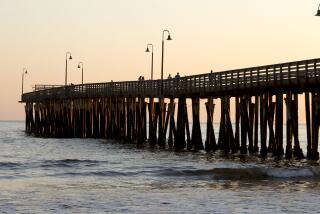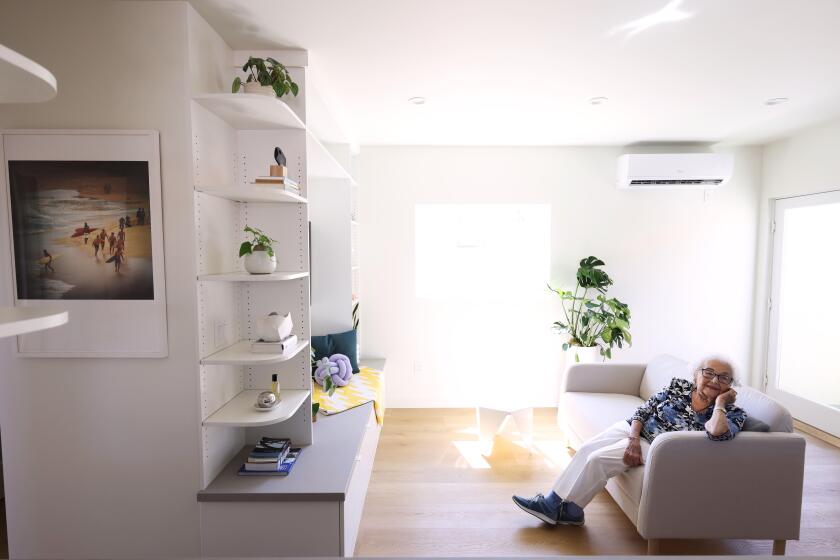Pico House Is Remnant of Land Baron’s Empire
When California’s last Mexican governor erected the city’s first three-story hotel in 1870, its indoor plumbing, dramatic gas lighting and French restaurant suited the social and cultural aspirations of young Los Angeles.
In time, the Pico House, an Italianate-style showplace, came to overshadow the city’s other three hotels, and it also became one of Los Angeles’ most enduring edifices, lasting from the 19th century into the 21st.
Its creator, Pio Pico, the son of a Spanish army sergeant, was born in 1801 at the San Gabriel Mission. Pico rose in rank and wealth to become one of California’s richest and most powerful men; his life paralleled both the roller-coaster growth and the binational politics of the region during the Mexican period.
Pico, appointed California governor for one month in 1832 and again from 1845 to 1846, was a gregarious man and generous to a fault, open-handed with friends and relatives who requested land grants.
Criticized for taking $14,000 from the sale of former mission lands in the San Fernando Valley, Pico said he used the money to help his country fight the United States in the Mexican War. Despite his help, Mexico would lose, and California would move from Mexican hands to Yankee ones.
Pico, who moved the state capital from Monterey to Los Angeles under a decree from the Mexican National Congress, sat out most of that war in Mexico, playing cards.
Even though his country had lost California, Pico returned to a Yankee-controlled Los Angeles in 1848, where he continued to enjoy influence and prestige as a land baron.
Elegantly dressed and clanking with Mexican medals and decorations, he often carried a cane with an ivory handle carved to resemble the comely leg of a cancan dancer. In 1853, he served briefly as a city councilman.
What made him rich beyond his governor’s position was a Gold Rush population boom that created a heavy demand for beef, making rancheros like Pico prosper.
In the early 1850s, Pico bought the 9,000-acre Rancho Paso de Bartolo Viejo, in what is now Whittier; the Yankees called it “Picoville.” It was cozy compared to his 230,000-acre ranch in San Diego County, which he and his brother, Andres, received in a land grant in 1828. It is now the Marine Corps’ Camp Pendleton.
On his Whittier land, “El Ranchito,” Pico built a chapel and a saloon not far from each other, or from his mansion. The patron fed, sheltered and gave work to the willing, while questionable characters hid out in the dense growth of vines and cottonwoods along the banks of the San Gabriel River.
Other questionable characters befriended the owner of Picoville. In Californio fashion, horse races, cockfights and dances were the usual entertainment--along with a more sinister pursuit: fighting. Ranulfo, one of Pico’s two sons by his mistress, Felicia Romero, was shot and killed while arguing over a young girl in the saloon.
After the Civil War, as families of Eastern visitors began replacing the businessmen and cowboys who had always come to town, Pico realized there was money to be made, and civic pride to be enhanced, by offering tourists a deluxe hotel. It would have “bathrooms and water closets for both sexes” on each floor.
In 1869, he sold his vast San Fernando Valley holdings for $115,000 and bought a relative’s house on Main Street, which he razed to build the Pico House at a cost of $48,000. He spent another $34,000 lavishly furnishing its 82 guest rooms.
Just before opening day, attempting to impress future customers, Pico conducted a VIP tour. Decked out in a flowered blue vest and wearing an enormous gold watch chain, by mistake he walked through a floor-to-ceiling mirror on one of the landings, shattering it. Only his pride was hurt.
On June 9, 1870, the hotel opened in an atmosphere like a civic holiday.
The Pico House astonished visitors with its grand double staircase, gas chandeliers, carved rosewood furniture, lace curtains, barbershop, caged songbirds, a lavishly landscaped courtyard, one bathroom per floor and a restaurant that dished up creative cuisine by French chef Sharles Laugier.
The costliest rooms, at $3 per night, had balconies overlooking a splashing fountain in the courtyard.
One English guest was entertaining a visitor--Hancock M. Johnston, the son of the late Confederate Civil War Gen. Albert Sidney Johnston--when he reported that Johnston unholstered his gun, carefully aimed low and fired at a cockroach on the cuff of the English guest’s pants. The bullet plastered the intruding insect to the wall without disturbing the cuff.
Soon a great rivalry sprang up between the Pico House and the Bella Union Hotel, a few blocks away. It carried over into the stagecoaches that brought guests from the harbor in Wilmington.
Two coaches, usually drawn by a team of vicious-looking mules, stood at dockside for boarding passengers, then, with a whoop and a holler, they raced toward town.
The first stop was the Bella Union, and whiplashed passengers who got off to register there often regretted not staying aboard for the second stop: the Pico House.
For 10 years, the hotel fulfilled Pico’s high hopes, even as his fortunes began to wane. The decline in Pico’s wealth paralleled the rise of Yankee power. Gambling, bad investments and being hoodwinked by Yankee con men forced Pico to lose the hotel.
Pico had already lost his San Diego ranch to his English-born brother-in-law, John Forster, and also lost a lawsuit to regain the land. Yet despite all that, Pico continued to entertain at his former hotel--especially in the ornate saloon that smelled of whiskey and hair oil--as if he were still the owner.
He finally mortgaged his Whittier ranch, but when he tried to repay the loan, the lender refused the money and took the land instead. Pico tried to recover the property through legal action but was evicted in 1892.
The last Mexican governor of California died two years later, at age 94, penniless and depending on friends for shelter.
He was buried next to his long-dead wife, Ygnacia, at Calvary Cemetery on North Broadway in Los Angeles. In 1921, the remains of both were moved to a private mausoleum on the six-acre Workman and Temple Homestead in the city of Industry.
Grander hotels soon surpassed it, and the Pico House became a flophouse during the 1930s and ‘40s, before the state bought the dilapidated property as part of the historic plaza park in 1953. By 1991, the state and the county had relinquished their roles to the city of Los Angeles.
After a recent face lift like those of its neighbors in El Pueblo de Los Angeles Historic Monument, the Pico House now sports colors something like its originals--fresh gray and maroon--and its facade, at least, is restored to the glories of earlier years in the city’s historic heart.
More to Read
Sign up for Essential California
The most important California stories and recommendations in your inbox every morning.
You may occasionally receive promotional content from the Los Angeles Times.










